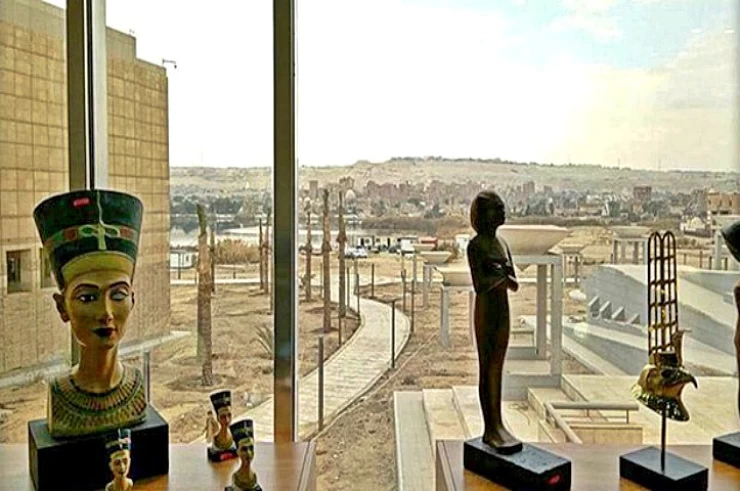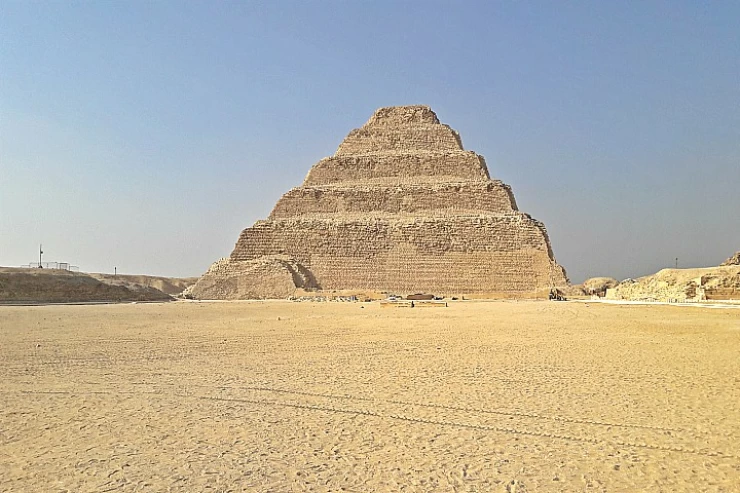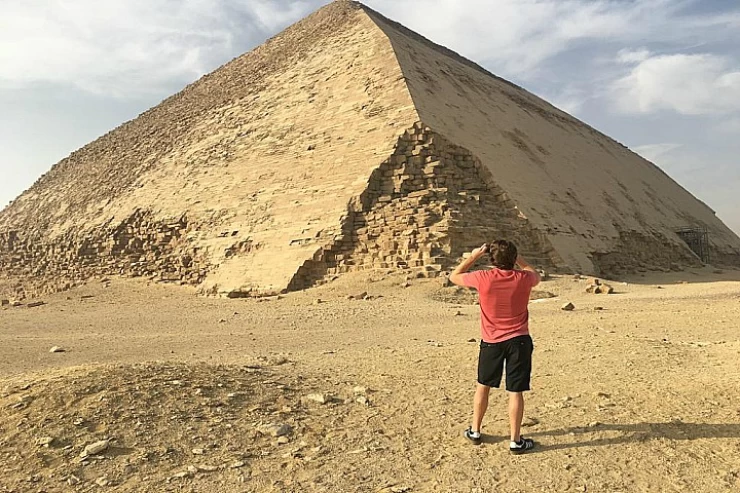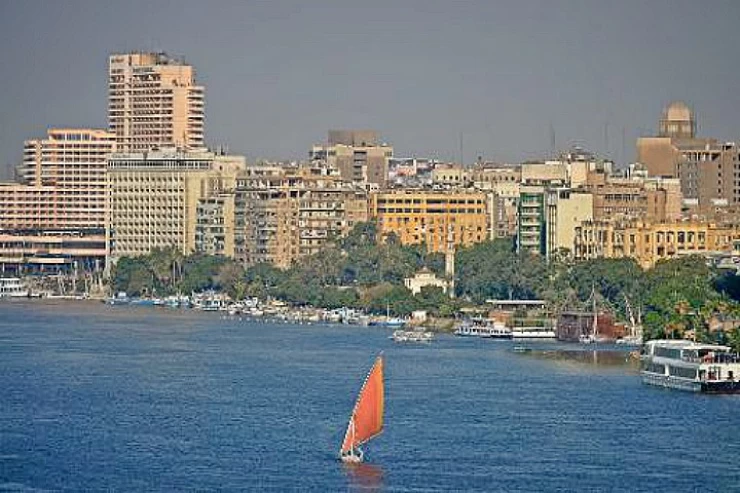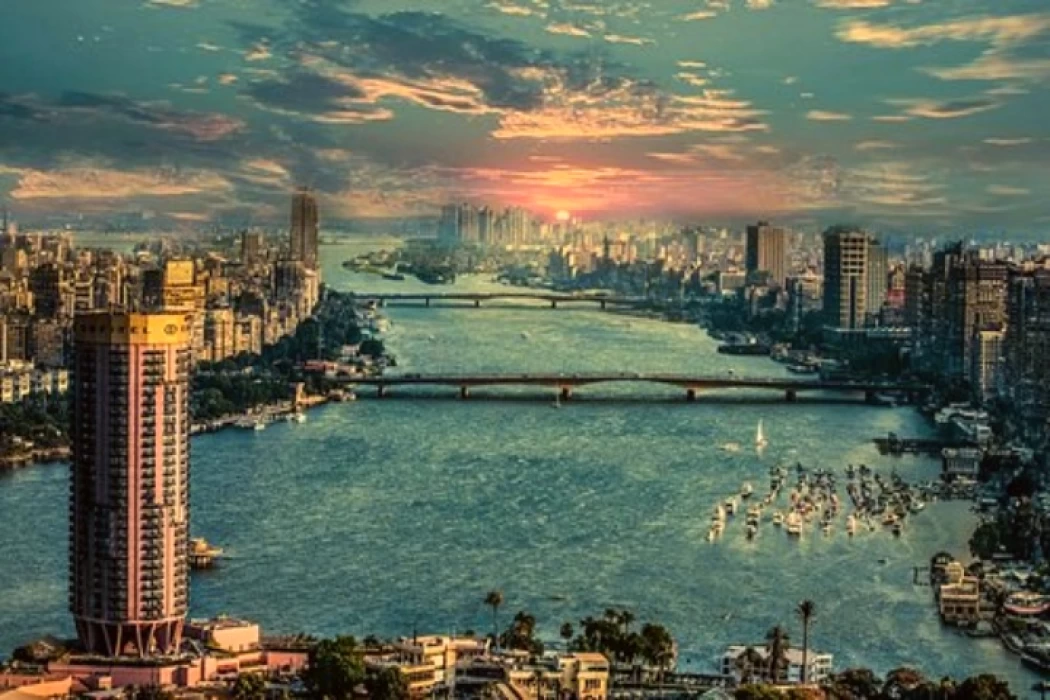
Governador do Cairo Egipto | História do Cairo | Atracções do Cairo
História do Cairo
a cidade foi fundada durante a dinastia fatímida por el Muez le din Allah el Fatemi ou el-hakim be Amr Allah e deu-lhe o nome de Cairo ou em árabe el Kahera (o vitorioso). era também conhecida como a cidade dos mil minaretes devido às numerosas mesquitas, castelos e igrejas que nela se encontram. é famosa por ser a capital do Egipto. é o centro da cultura, da arte e da beleza do Egipto.
As atracções mais famosas do Cairo
1-O museu egípcio
O museu foi apoiado em 1857 pelo arqueólogo francês Auguste Mariette e afectou a sua atual casa - dentro da distinta mansão rosa-pó no centro do Cairo - em 1897.
A reunião está mal identificada e não foi bem iniciada devido aos limites de área (e apenas uma fração do seu acervo total está literalmente em exposição).
Tem algumas vitrinas vazias devido ao facto de os artefactos já terem sido transferidos para o até agora selado novo Grande Museu Egípcio (GEM), mas ficará impressionado com a beleza das exposições.
Os tesouros aqui expostos foram todos encontrados no túmulo de Tutankhamon, sucessor de Amenófis IV (mais tarde Akhenaton), que morreu aos dezoito anos de idade.
O túmulo, descoberto por egiptólogos no vale dos Reis em 1922, continha o maior conjunto de objectos de sepultura jamais encontrado intacto num túmulo egípcio. O molde e os sarcófagos de Tutankhamon (Sala 3), o trono de leão do faraó (Sala 35) e o seu fascinante conjunto de guarda-roupa (Sala 9).
As galerias de Tutankhamon são afectadas de forma positiva e podem ser a exposição de destaque no novo GEM. Entretanto, no mês do calendário gregoriano de 2020, a coleção de múmias reais do depósito egípcio foi transferida para o Museu Nacional das Civilizações Egípcias (NMEC) para partilhar ainda mais a grande quantidade de recursos materiais do Egipto entre os museus do Cairo.
Este túmulo recém-descoberto, bem como muitos outros belos túmulos talhados na rocha Esta tumba recém-descoberta, bem como muitos outros belos túmulos rupestres dos famosos faraós, podem ser explorados em breve no vale dos reis através de excursões de um dia a Luxor. Se puder embarcar no comboio por algumas horas para norte, também pode percorrê-lo durante as excursões de um dia a Assuão ou mesmo durante a nossa excursão de 2 dias a Luxor a partir de Assuão. Existem muitas excursões de um dia ao Egipto que vão para Luxor a partir de várias cidades egípcias, como as excursões de um dia a Hurgada por terra para Luxor ou se vier para umas férias de lazer em Sharm, pode apanhar o avião por um dia durante as excursões a Sharm El Sheikh para explorar toda a cidade histórica.
2- Casa de culto de Al-Azhar
A casa de culto de Al-Azhar é o mais belo edifício da era fatímida do Cairo e uma das mais antigas mesquitas vivas da cidade, concluída em 972 d.C.
É também uma das universidades mais antigas do mundo - o Khalifah El-Aziz conferiu-lhe o estatuto de universidade em 988 d.C. (as diferentes universidades que disputam o estatuto de "mais antiga" situam-se em Fes) e, atualmente, a Universidade de Al-Azhar continua a ser o principal centro de sistema do mundo monoteísta.
A entrada principal é a Porta dos Barbeiros, situada a noroeste do edifício, contígua à fachada neo-árabe concebida por Abbas II.
Do outro lado do pátio encontra-se o salão de orações principal, com uma área de três mil metros quadrados.
3- Cairo Copta
Este pequeno aglomerado de ruas sinuosas e cheias de igrejas encontra-se dentro das muralhas de um centro urbano recente, onde o imperador romano Marcus Ulpius Traianus projectou inicialmente uma defesa sobre o rio.
Partes das torres romanas ainda comandam a maioria das ruas.
Este pequeno aglomerado de vielas sinuosas, repleto de igrejas, encontra-se dentro das muralhas de um centro urbano recente, onde o imperador romano Marcus Ulpius Traianus projectou inicialmente uma defesa sobre o rio.
Partes das torres romanas ainda comandam a maioria das ruas.
O museu copta contém uma grande quantidade de conhecimentos sobre os primeiros cristãos do Egipto e alberga pelo menos uma das melhores colecções de arte copta do país.
Ao lado, a Igreja Suspensa do século IX contém algumas amostras encantadoras do design copta. Apoiada no século IV, a igreja foi originalmente projectada sobre as torres do portão romano (daí o nome) e foi consideravelmente remodelada ao longo do século IX.
Para muitos viajantes cristãos, o ponto alto de uma visita ao atual bairro é a Igreja de São Sérgio e a divindade greco-romana, onde a lenda nativa diz que a Virgem abençoou a Virgem Maria, o menino Jesus e a família segura durante o massacre de bebés do sexo masculino pelo rei Herodes.
Mais para o interior do bairro, chega-se ao tabernáculo do monte Esdras, que se diz ter sido concebido perto do local onde o bebé Moisés foi encontrado entre os juncos. À saída do bairro, visitará conjuntamente a casa de culto de Amr Ibn al-As; a principal casa de culto construída no Egipto.
4- Khan el-Khalili
Este souq (bazar) pode ser um conjunto labiríntico de ruelas estreitas, estabelecido como um bairro de aparência em 1400 d.C., que ainda ressoa com o tilintar de bastões de metal e ourives.
As ruas principais já se entregaram totalmente ao comércio de turistas (com muitas filmagens de papiro de baixo custo e pirâmides de plástico em exposição), no entanto, desviar a maior parte do arrasto para os becos circundantes, e também as pequenas lojas e oficinas desarrumadas são um número de os lugares mais eficazes para ir para selecionar mercadorias antigas no Egito.
Enquanto aqui estiver, faça uma paragem no café mais ilustre do Cairo, o Fishawis, onde quer que os ocasionais e doces chás árabes xaroposos sejam em forma de prato, turistas mortos e comerciantes nativos a um ritmo acelerado.
Para os apreciadores de compras, a rua mais conhecida do souq é a Rua Al-Muski (chamada Rua Gawhar al-Qaid no seu extremo japonês).
As oficinas de ouro e prata reúnem-se principalmente a norte do cruzamento desta rua com a Rua do Ser Supremo Al-Muizz Li-Din, enquanto a secção do mercado de especiarias fica simplesmente a sul.
O mercado é delimitado no seu aspeto japonês pela casa de culto Sayyidna el-Husein, construída em 1792 para honrar o neto do Profeta Maomé.
5- a cidadela
A fortaleza do Cairo foi projectada por Salah-ad-Din Yusuf ibn-Ayyub em 1176.
A estrutura original que ele arranjou desapareceu há muito, para além das muralhas exteriores japonesas, no entanto, uma herança de governantes criou as suas próprias adições aqui.
A masjid de Muhammad Ali é o monumento mais notável e, por conseguinte, o principal motivo de visita. Apelidada de "Alabaster masjid", a sua pedra branca e os seus minaretes altos e desproporcionadamente esguios são um dos marcos mais bonitos do Cairo.
A outra grande razão para voltar aqui são as vistas sobre a cidade; dirija-se ao Terraço Gawhara para obter o panorama mais eficaz da cidade.
A nordeste da mesquita de Muhammad Ali encontra-se a mesquita de El-Nasir, construída em 1318-35 por Mohammad el-Nasir.
Uma coleção de museus bastante tímidos (o depósito da Polícia, o depósito Militar Nacional e o Museu das Carruagens) ocupam uma série de edifícios opostos no site e medem muito bem a vista pelo design dos edifícios particulares em vez das próprias exposições.
6-Masjid do sultão Hassan
Uma das melhores amostras do design mameluco no mundo, a masjid do grande turco Hassan pode ser uma visão de proeza monoteísta com uma abundância de particularização de cilindros e opções complexas de arabescos.
Foi construída em 1356-63 para o grande turco Hassan el-Nasir.
O enorme limiar principal no canto norte tem cerca de vinte e seis metros de altura e, por conseguinte, a torre no canto sul é a mais alta do Cairo, com oitenta e um metros e meio. 5 metros.
O limiar principal conduz a um vestíbulo arredondado, no lado oposto ao qual se encontra um pequeno vestíbulo, onde se encontra uma passagem que conduz ao Tribunal aberto e ornamentado, centrado em torno de uma fonte de água.
A partir daqui, a porta de ferro Associate in Nursing conduz ao sepulcro do sultão, onde os pendentes estalactiformes da cúpula inicial ainda sobrevivem. No centro da câmara encontra-se o caixão simples do sultão.
Em frente à grande mesquita do turco Hassan encontra-se a mesquita de El-Rifai, construída em 1912 para tratar do túmulo do vicereino Ismail e feita para duplicar a sua vizinha mais antiga.
7-Nilómetros
A ilha de Roda - a sul da ilha de Gezira - alberga o Palácio Monastirli, outrora a residência do pacha otomano.
No interior dos jardins do palácio, mesmo no extremo sul da ilha, encontra-se o Nilómetro do Cairo, que foi concebido para acompanhar o fluxo e refluxo do Nilo e prever as alturas das cheias anuais.
Ao contrário dos Nilómetros que se encontram no Alto Egipto (como o Nilómetro vivo na gigantesca ilha de Assuão), este poderá ser uma construção posterior abundante, construída em 861 d.C.
Também dentro dos terrenos do palácio está o pequeno depósito Umm Khalthum, que celebra a vida da ilustre estrela da ópera egípcia.
Umm Khalthum (1898-1975) é a cantora mais amada do mundo árabe, e ouvirá a sua música durante toda a sua estadia no Egipto, sendo tocada na estrada a partir dos Ahwaz (cafés tradicionais) e no sistema de som de quase todos os táxis.
8- Parque Al-Azhar
Construído sobre o que era basicamente uma lixeira medieval, o Parque Al-Azhar é o pulmão inexperiente do bairro recente.
Foi inaugurado em 2005 e proporciona uma pausa muito necessária para o caos sobrelotado da azáfama das ruas do Cairo.
No interior, os jardins bem cuidados são um local deslumbrante para um passeio noturno, especialmente porque as vistas sobre toda a cidade recente são lindas ao pôr do sol.
Há um ou dois restaurantes no local, pelo que é um excelente sítio para descansar depois de um longo dia de procura.
Se regressar ao fim de semana, o parque está repleto de famílias nativas que fogem ao barulho do trânsito que envolve o resto do Cairo.
O Parque Al-Azhar é mais simplesmente visitado apanhando um táxi, no entanto, se já estiver dentro do distrito monoteísta do Cairo e não estiver demasiado calor, poderá virar para leste na Rua Darb al-Ahmar a partir de Bab Zuweila e caminhar até à entrada inferior do parque.
No interior, o depósito guarda um conjunto de bens da cantora, juntamente com os seus fantásticos fatos de palco em jóias, e há um estimulante documentário a preto e branco sobre a sua vida (com legendas em inglês).
Fora do palácio, as ruas da Ilha de Roda são divertidas de percorrer e ainda têm algumas mansões do primeiro século XX.
9- Máscara de Ibn Tulun
A segunda masjid mais antiga ainda existente no Cairo, a masjid Ibn Tulun, foi projectada entre 876 e 879 d.C. e esculpida no santuário de Meca (Arábia Saudita).
Na altura em que foi projectada, era a mais importante masjid viva.
As colunatas do Átrio Principal apresentam abundantes fragmentos vivos de frisos enrolados e abrem-se para uma série de salões de fachada estreita.
A sala de oração principal (na face sul do pátio) ainda conserva fragmentos da sua decoração mais antiga de estuque esculpido e madeira e, por conseguinte, o mihrab tem aqui vestígios da sua decoração original em mosaico dourado.
Na fachada norte da mesquita encontra-se a torre de 40 metros de altura, com um belo arco mourisco sobre a porta de entrada e degraus em espiral que rodam pelo interior. É escultural nos minaretes da boa masjid de Samarra, no rio.
Se subir os 173 degraus até à sua plataforma mais alta, tem uma vista muito boa sobre o oceano de casas a norte e sobre as colinas de Mokattam a leste.
10- Museu de Arte Islâmica
O depósito de arte monoteísta do Cairo possui uma das mais importantes colecções vitais de proezas do Médio Oriente no mundo.
Estão expostos azulejos otomanos, cerâmicas ayyubid, frescos, madeira finamente axadrezada, moedas, lápides de mármore esculpidas e tapetes em tons de jóias, entre outras coisas.
É preciso dedicar algum tempo a examinar os Alcorões luminosos e, por conseguinte, as peças de cerâmica, vidro e metal ricamente ornamentadas.
Em seguida, passeie para admirar a variedade de jóias fortemente ornamentadas e, portanto, as salas dedicadas à filosofia natural e às diferentes ciências, onde encontrará astrolábios extremamente elaborados e diferentes instrumentos.
O depósito situa-se no centro do bairro monoteísta do Cairo, pelo que é um local sensato para começar ou terminar uma visita ao bairro. Fica a uma curta distância a pé (depois de atravessar uma estrada principal monstruosamente movimentada) de Bab Zuweila.







